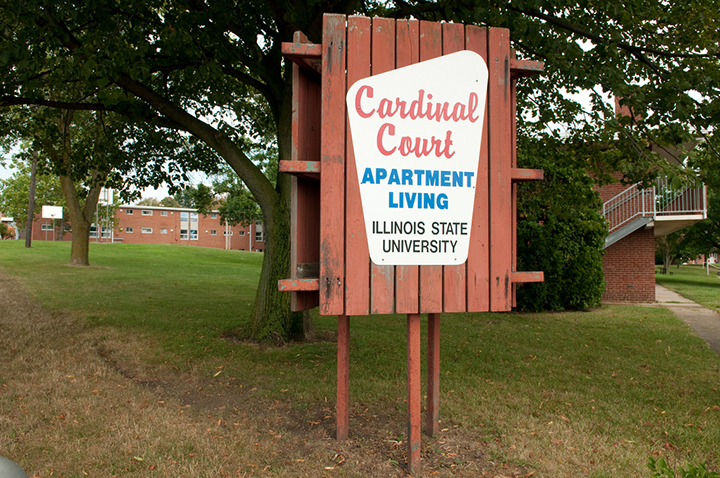There has been a lot of change on campus since Maureen Blair joined Student Affairs nearly 25 years ago. Fell Hall was converted from student housing to classroom and office space. Dunn-Barton and Walker halls were replaced by the Student Fitness Center and McCormick Hall.
No longer used by Housing, Atkin-Colby and Hamilton-Whitten is now available for office space during upcoming projects, including construction of a new College of Fine Arts complex. The University’s Master Plan calls for the South Campus residence halls to come down, making way for a new Mennonite College of Nursing facility.
Blair knows that such transitions aren’t always easy on graduates. As the director of University Housing the past 13 years, she hears from alums who are saddened by the loss of their special place on campus.
“People lived their lives in these buildings. They met their future spouse, they were served their military papers,” Blair said. For the residents of Cardinal Court, there were happy moments spent watching children grow. Others associate their first years in the United States with those old apartments, as they once housed international students. The first months of married life were enjoyed there by many as well.
“We are responsible and respectful of those memories,” said Blair, who was pleased that a student advisory group voted to retain Cardinal Court as the name for the complex. “They wanted to pay homage to tradition.”
The decision was one of many guided by student input. Continuing ISU’s commitment to shared governance, students were given the chance to provide feedback on everything from color choices for the apartment interior and where the bus stop should be placed to what the buildings should be named.
“They came up with the concept of naming them after trees found on campus,” Blair said. The decision is fitting, given the campus is home to the Fell Arboretum and has been named a Tree Campus USA every year since 2008. The buildings are named Birch, Cypress, Dogwood, Evergreen, and Fir halls.
The fact such finishing details were on the agenda just months after the construction work began is a testimony to the benefit of the public-private partnership that made the project possible. State projects, by comparison, typically remain in the planning stages for much longer than the 15 months needed to construct the new Cardinal Court.
The unique and exciting initiative resulted in attractive, modern, and cost-effective living spaces for students, who have only just begun to create the next chapter of Cardinal Court memories.

